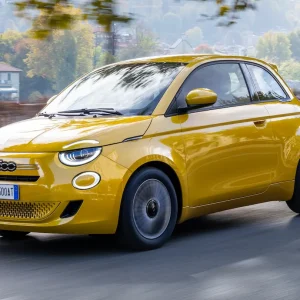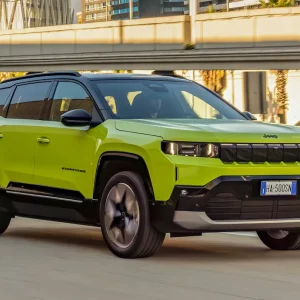What a difference two years makes. Before Volvo introduced its then new XC90 in summer 2015, it’s fair to say that this was a brand in crisis. Sold off by Ford, picked up by the then unknown Chinese brand Geely, it had a dated line-up that lacked proper vision and direction.
Two years on and the transformation has been dramatic. The XC90 has been a runaway success (especially with fleets), there’s a high demand for the T8 plug-in hybrid and we’ve had the S90, V90 and V90 Cross Country, and now this new XC60.
Although there’s no question that the XC60’s original arrival in 2008 was perfect timing for the current SUV boom, its numbers are still deeply impressive. Representing 30% of global sales, the outgoing XC60 was Volvo’s most popular model for UK fleets last year, with around 75% of them leaving showrooms and going to business buyers.
Don’t expect this new model to be any less successful either. Massively reduced running costs and a forthcoming T8 plug-in hybrid model, you’d be a fool to bet against it, even given strong competition from the likes of the Audi Q5 and Land Rover Discovery Sport, both of which it’s expected to slot behind in the UK sales charts.

The entry-level D4 and this flagship D5, both with a 2.0-litre turbo-diesel engine with 190hp and 235hp respectively, are likely to account for the bulk of XC60s leaving UK showrooms. In Momentum trim, the D4 manages a decent 133g/km emissions and 55.4mpg average fuel economy. Meanwhile, the faster D5 manages the 0-60mph sprint in 7.2 seconds along with a 137mph top speed, 144g/km emissions and 51.4mpg.
For the moment, all XC60s come with four-wheel drive and an eight-speed automatic gearbox, but don’t be surprised to see an entry-level front-wheel drive version introduced before too long. Volvo says it expects the T8 with its 49g/km emissions, very tempting 9% BIK rating and £170 per month tax bill to account for 12% of sales, although it openly admits that it massively under-estimated the popularity of this version with the XC90.
On the road is where the XC60 is most obviously different to the outgoing model. Refinement levels both inside and out have been drastically improved, with minimal road and wind noise even at motorway speeds. It’s noticeably quieter than its rivals.

If there’s one downside to that extra refinement though, it’s that the XC60 feels big. This isn’t a car you’re going to feel comfortable in hustling down a twisty country lane when compared to an Audi Q5. While it’s longer and wider than before, Volvo insists there’s been no major weight change compared to its predecessor, but there’s little to no feedback through the steering wheel or seat relating what the car is doing beneath you. The low-speed ride can be a little fidgety too, although this improves with speed.
At least that gives you a chance to revel in the stunning interior. With a design again largely lifted straight from the larger XC90, we love the large, dominant portrait-style touch-screen in the centre of the dash which is now clearer than before. A decent amount of head and legroom in both the front and rear seats, plus a reasonable boot (505 or 1,432 litres) makes it pretty practical.

Also new for the XC60 and specifically aimed at fleet buyers is a Pro trim level on all three versions. For those business drivers unable to choose any optional extras, the Pro levels package together a group of popular options, adding between £2,000 and £4,000 to the standard list price.
Critics might accuse Volvo of simply repeating its XC90 in a smaller form, but the reality is that when you’ve got a successful formula, you’ve got to forgive the firm for wanting to do the same again. Make no mistake, the best-selling mid-size premium SUV in Europe just got even better.
| P11D Price: £42,950 |
| On sale: May 2017 |
| Residual value: 46.2% |
| Depreciation: £23,100 |
| Fuel: £6,394 |
| Service, maintenance & repair: £2,945 |
| Cost-per-mile: 83.2p |
| Fuel consumption: 51.4mpg |
| CO2 (BIK Band): 144g/km (30%) |
| BIK 20/40% per month: £215/£430 |
| Boot space: 505/1,432 litres |
| Engine size/power: 1,969cc/235hp |





